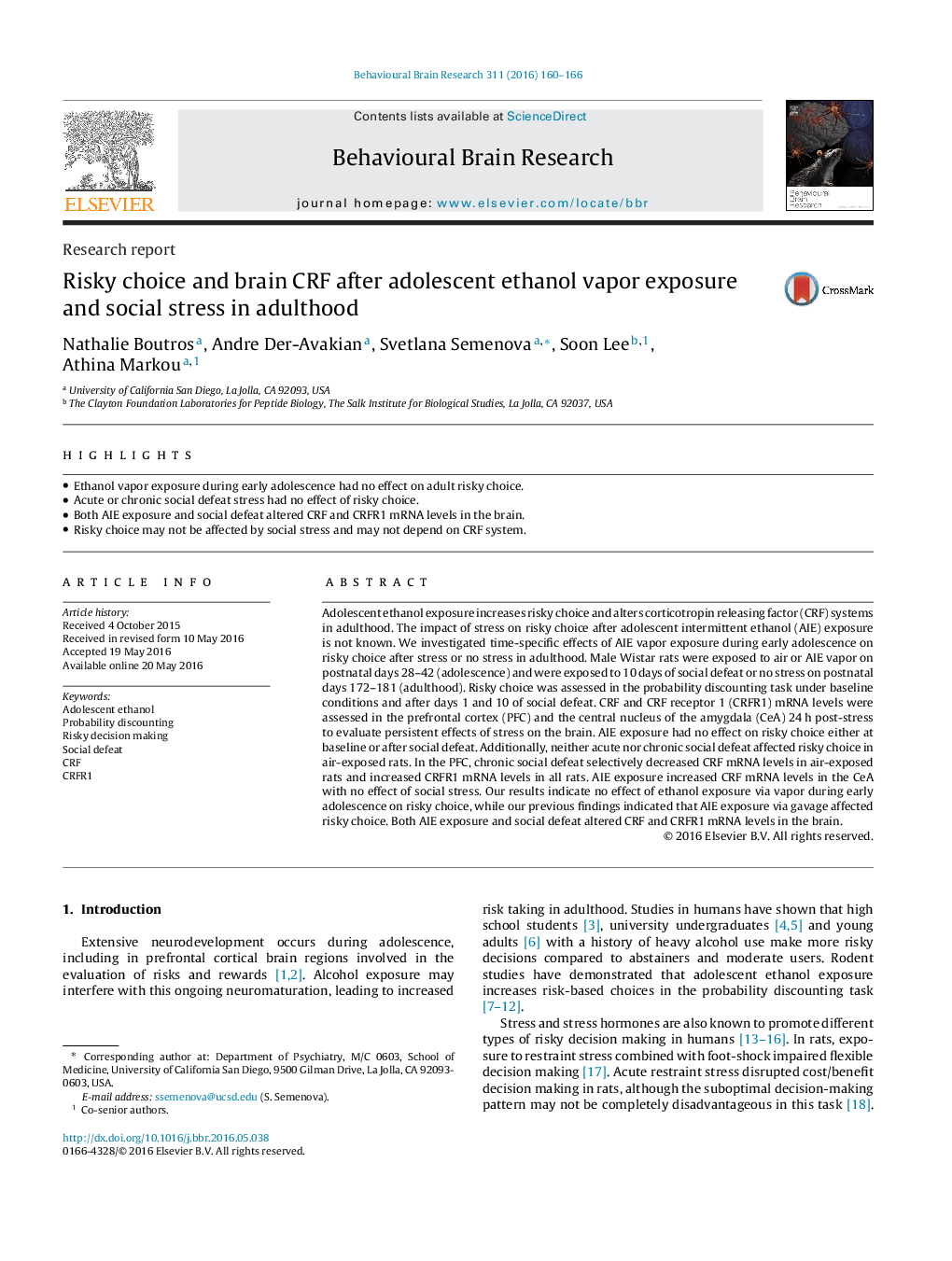| Article ID | Journal | Published Year | Pages | File Type |
|---|---|---|---|---|
| 6255917 | Behavioural Brain Research | 2016 | 7 Pages |
â¢Ethanol vapor exposure during early adolescence had no effect on adult risky choice.â¢Acute or chronic social defeat stress had no effect of risky choice.â¢Both AIE exposure and social defeat altered CRF and CRFR1 mRNA levels in the brain.â¢Risky choice may not be affected by social stress and may not depend on CRF system.
Adolescent ethanol exposure increases risky choice and alters corticotropin releasing factor (CRF) systems in adulthood. The impact of stress on risky choice after adolescent intermittent ethanol (AIE) exposure is not known. We investigated time-specific effects of AIE vapor exposure during early adolescence on risky choice after stress or no stress in adulthood. Male Wistar rats were exposed to air or AIE vapor on postnatal days 28-42 (adolescence) and were exposed to 10Â days of social defeat or no stress on postnatal days 172-181 (adulthood). Risky choice was assessed in the probability discounting task under baseline conditions and after days 1 and 10 of social defeat. CRF and CRF receptor 1 (CRFR1) mRNA levels were assessed in the prefrontal cortex (PFC) and the central nucleus of the amygdala (CeA) 24Â h post-stress to evaluate persistent effects of stress on the brain. AIE exposure had no effect on risky choice either at baseline or after social defeat. Additionally, neither acute nor chronic social defeat affected risky choice in air-exposed rats. In the PFC, chronic social defeat selectively decreased CRF mRNA levels in air-exposed rats and increased CRFR1 mRNA levels in all rats. AIE exposure increased CRF mRNA levels in the CeA with no effect of social stress. Our results indicate no effect of ethanol exposure via vapor during early adolescence on risky choice, while our previous findings indicated that AIE exposure via gavage affected risky choice. Both AIE exposure and social defeat altered CRF and CRFR1 mRNA levels in the brain.
